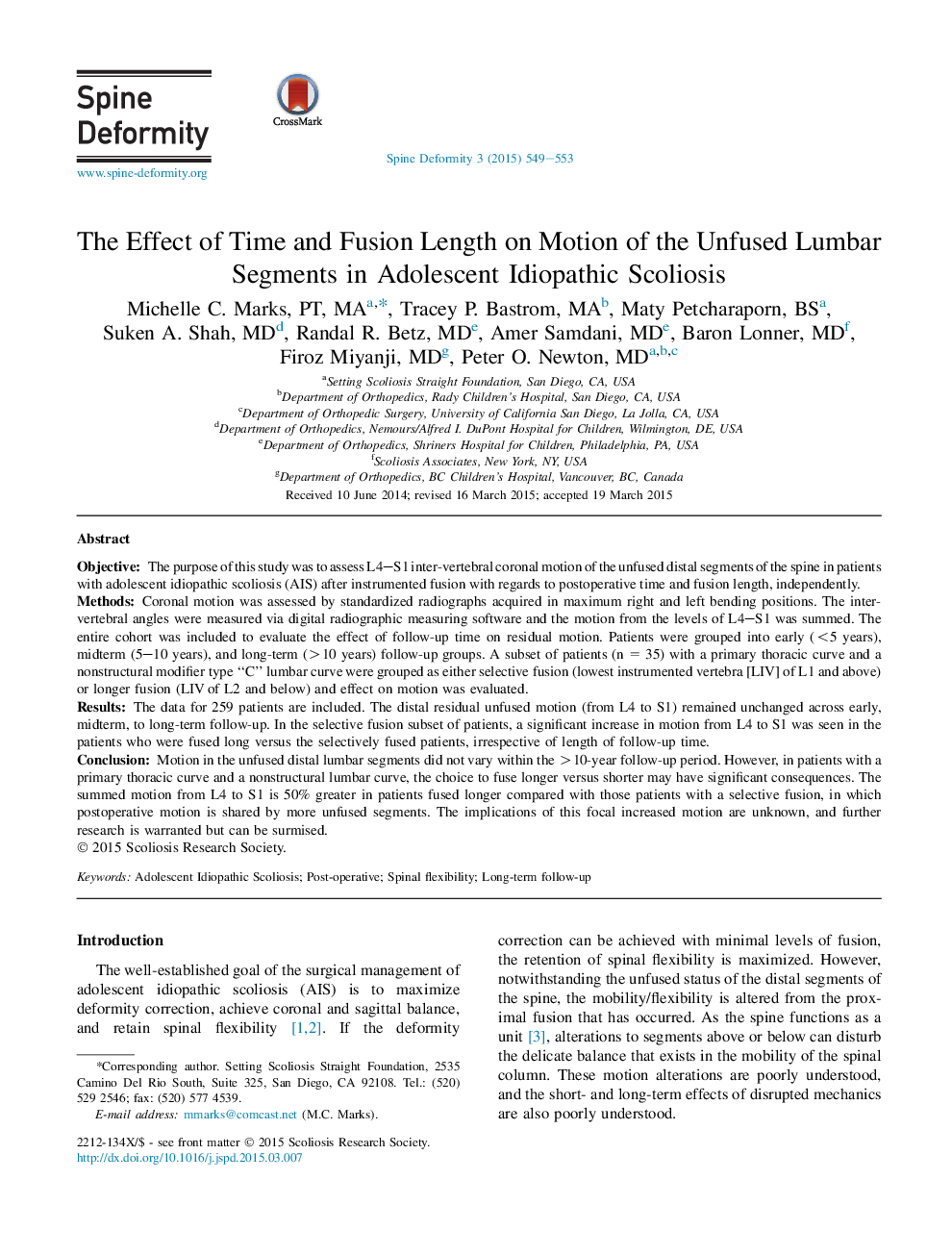| Article ID | Journal | Published Year | Pages | File Type |
|---|---|---|---|---|
| 4095272 | Spine Deformity | 2015 | 5 Pages |
ObjectiveThe purpose of this study was to assess L4–S1 inter-vertebral coronal motion of the unfused distal segments of the spine in patients with adolescent idiopathic scoliosis (AIS) after instrumented fusion with regards to postoperative time and fusion length, independently.MethodsCoronal motion was assessed by standardized radiographs acquired in maximum right and left bending positions. The intervertebral angles were measured via digital radiographic measuring software and the motion from the levels of L4–S1 was summed. The entire cohort was included to evaluate the effect of follow-up time on residual motion. Patients were grouped into early (<5 years), midterm (5–10 years), and long-term (>10 years) follow-up groups. A subset of patients (n = 35) with a primary thoracic curve and a nonstructural modifier type “C” lumbar curve were grouped as either selective fusion (lowest instrumented vertebra [LIV] of L1 and above) or longer fusion (LIV of L2 and below) and effect on motion was evaluated.ResultsThe data for 259 patients are included. The distal residual unfused motion (from L4 to S1) remained unchanged across early, midterm, to long-term follow-up. In the selective fusion subset of patients, a significant increase in motion from L4 to S1 was seen in the patients who were fused long versus the selectively fused patients, irrespective of length of follow-up time.ConclusionMotion in the unfused distal lumbar segments did not vary within the >10-year follow-up period. However, in patients with a primary thoracic curve and a nonstructural lumbar curve, the choice to fuse longer versus shorter may have significant consequences. The summed motion from L4 to S1 is 50% greater in patients fused longer compared with those patients with a selective fusion, in which postoperative motion is shared by more unfused segments. The implications of this focal increased motion are unknown, and further research is warranted but can be surmised.
